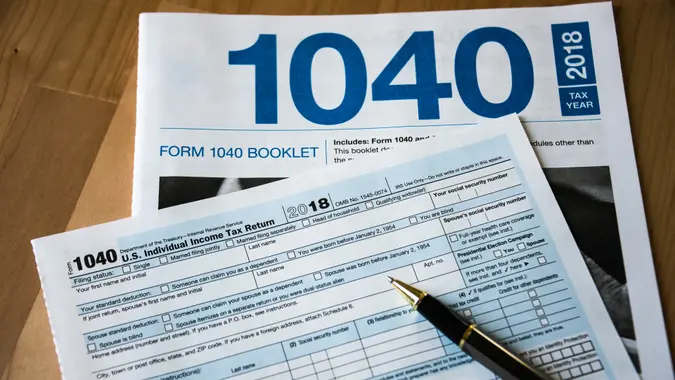Taxes 2024: Making This One Update Now Could Save You a Ton of Money Next Year

Commitment to Our Readers
GOBankingRates' editorial team is committed to bringing you unbiased reviews and information. We use data-driven methodologies to evaluate financial products and services - our reviews and ratings are not influenced by advertisers. You can read more about our editorial guidelines and our products and services review methodology.

20 Years
Helping You Live Richer

Reviewed
by Experts

Trusted by
Millions of Readers
Everyone’s favorite time of year is right around the corner: Tax Day. While paying taxes is everyone’s responsibility, the amount you choose to withhold from your paychecks is up to you and how much (or how little) you withhold can have financial consequences.
Withholding Too Little Versus Too Much
By withholding too little, you could be on the hook for a sizable tax bill come Tax Day. Not only that, if the amount of unpaid taxes is large enough, you might also be subject to an underpayment penalty from the IRS.
At the same time, withholding too much could mean that you’re shorting yourself on take-home pay — pay you could add back into your cash flow throughout the year. Essentially, you’re giving the IRS an interest-free loan and you won’t get the money back until tax time.
The U.S. tax system is pay-as-you-go. This is the reason why freelancers and self-employed workers are expected to make regular quarterly tax payments throughout the year.
Your circumstances can change year to year, including fluctuations in income, marital status, whether you’re claiming dependents, etc. CNBC explained that you could “owe huge taxes” if you don’t review and make withholding adjustments year to year.
How To Know If Your Tax Withholding Needs Adjusting
If you’ve been consistently owing taxes each year, you’re likely withholding too little. However, if you’ve been consistently receiving tax refunds each year, you’re likely overpaying your taxes throughout the year. You can use the IRS Tax Withholding Estimator to figure out the appropriate tax withholding for you based on your income, deductions and tax credits.
Once you determine the proper withholdings for you, it’s important to accurately fill out your W-4. It’s crucial for your tax liability and ultimately your cash flow throughout the year.
 Written by
Written by  Edited by
Edited by 

























